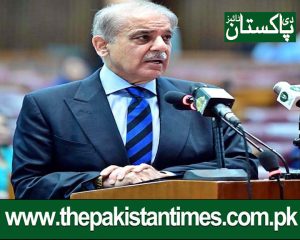 Mian Muhammad Shehbaz Sharif was elected Prime Minister of Pakistan on Sunday by winning 201 votes in the National Assembly, defeating Omar Ayub Khan of the Sunni Ittehad Council, who received 92 votes. Born on September 23, 1951, he has now been elected twice as Prime Minister of Pakistan and three times as Chief Minister of Punjab. He is the younger brother of Pakistan Muslim League-Nawaz Quaid Nawaz Sharif, the country’s three-time elected Prime Minister.
Mian Muhammad Shehbaz Sharif was elected Prime Minister of Pakistan on Sunday by winning 201 votes in the National Assembly, defeating Omar Ayub Khan of the Sunni Ittehad Council, who received 92 votes. Born on September 23, 1951, he has now been elected twice as Prime Minister of Pakistan and three times as Chief Minister of Punjab. He is the younger brother of Pakistan Muslim League-Nawaz Quaid Nawaz Sharif, the country’s three-time elected Prime Minister.
Shehbaz Sharif’s first term as Prime Minister lasted from 11 April 2022 to 14 August 2023. He was elected by the Pakistan Democratic Movement (PDM) by ousting Imran Khan through voting no confidence in the National Assembly.Hailing from a prominent business family, Shehbaz Sharif graduated from Government College, Lahore and served as President of the Lahore Chamber of Commerce and Industry in 1985 before entering politics. He served as a member of the Punjab Assembly from 1988 to 1990 and a member of the National Assembly from 1990 to 1993. He then served as Leader of the Opposition in the Punjab Assembly from 1993 to 1996. In 1997, he was elected Prime Minister. of Punjab and served until 1999, when after a coup, his government along with the federal government were overthrown.
Shehbaz Sharif played a leading role in restoring democracy in the country and was elected as a member of the Punjab Assembly for the fourth time in 2008, and served as Chief Minister of Punjab for the second time from June 2008 until March 2013.After being elected to three provincial assembly seats and one parliamentary seat in the 2013 general election, Shehbaz was elected Chief Minister of Punjab for the third time. Shehbaz Sharif’s dynamic leadership and effective administration have earned him the title of China Shehbaz Speed.
Under his leadership, Pakistan quickly resolved its energy crisis, completing the Sahiwal coal fired power plant in a record 22 months and launching three RLNG power projects in Punjab. He led the establishment of the Urban Bus System, providing modern travel facilities in Lahore, Multan and Rawalpindi/Islamabad. Transformational projects like the Lahore Orange Line Metro were also among his government’s high-profile initiatives to revolutionize transportation.His administration focused on modernizing schools, recruiting educators based on merit, and establishing the Punjab Education Support Fund, which supported more than 350,000 students with excellent academic performance. To its credit, innovative programs like Daanish School in South Punjab and laptop program were also included. Besides implementing the Zeevar-e-Taleem programme, which provides subsidies to more than half a million girls in southern Punjab, Shehbaz Sharif also runs an educational program for children of brick kiln workers , resulting in about 100,000 people not enrolling. -graduate. students return to school.
Sub Editor: Ghufran